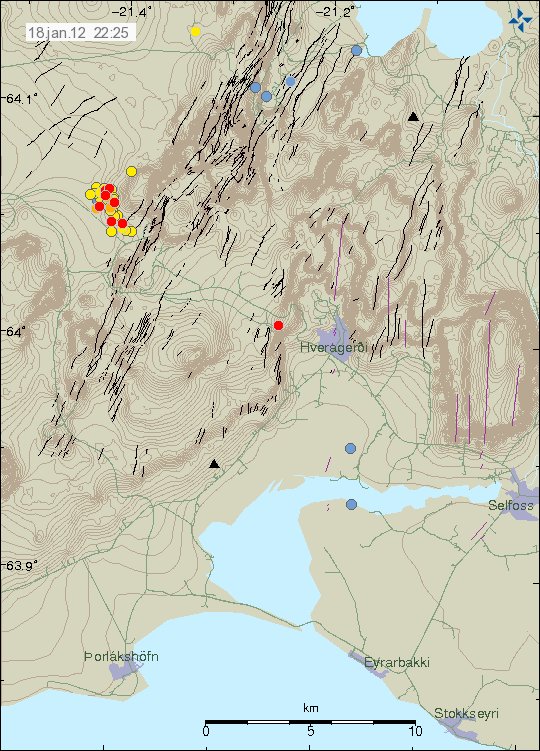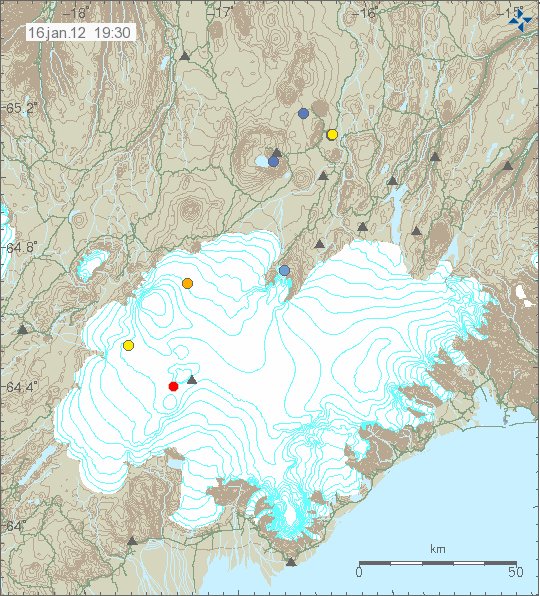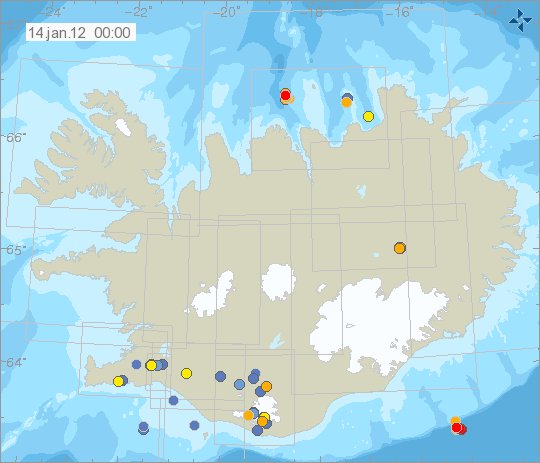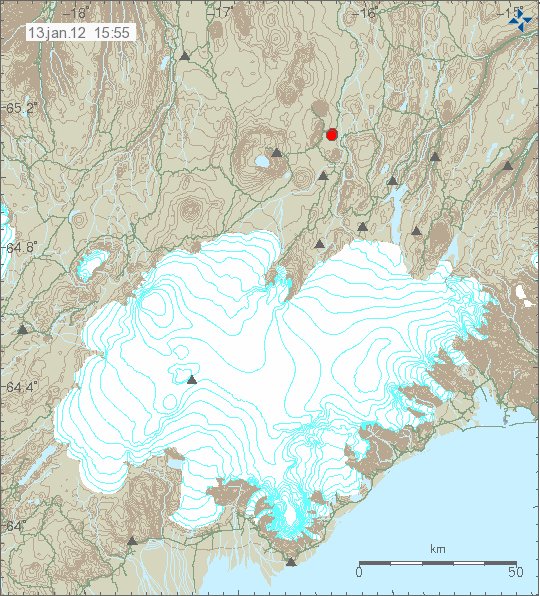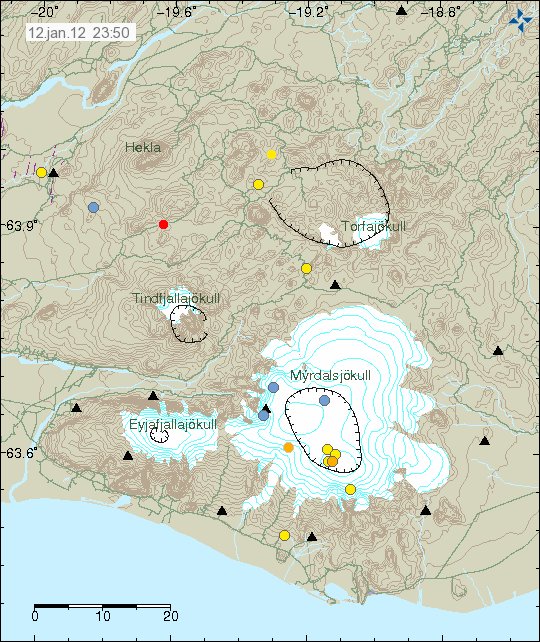Based on the harmonic tremor data in the past few hours it seems that the eruption in El Hierro volcano has ended again. How long or if the eruption has really ended now is impossible to know at the moment. However it is clear based on the tremor activity that all eruption activity has ended and it did so suddenly and after sharp increase in activity several hours before that.
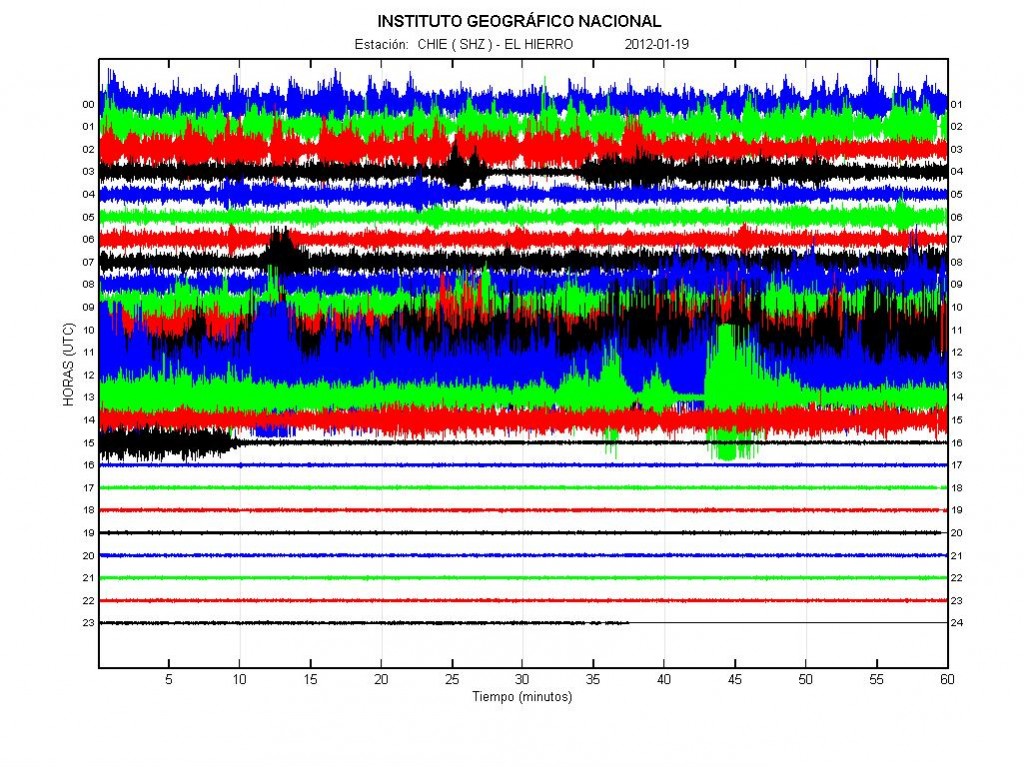
The activity in El Hierro volcano today. Notice the spikes when the eruption suddenly gains energy and how fast it dies out based on the tremor data. Copyright of this image belongs to IGN (Instituto Geográfico Nacional).
Even if the eruption has ended. For the moment anyway. The area where the eruption took place is going to have hydro thermal activity for several months to comes, and up to many years if there are any shallow dike intrusions in the base of El Hierro volcano (and Island). I do not yet know if the eruption has ended, or if this is just an brake in the current eruption cycle. But next few hours to days are going to make it clear if this is an break or not. But I would not be surprised if the eruption started again at the same location, or an new one. As this is shield volcano and there eruption pattern often have breaks in them for shorter and longer periods of time.
Update 1: It has been sad that the graph has once again been re-scaled. To what size I do not know for sure. But in an comment on Facebook it was sad to be around -36dB. If that is the case. I am wrongly interpreting the data. Because of that. I have no idea what is going on in El Hierro volcano at the moment.
Update 2: It seems that activity has renewed again in El Hierro volcano. It started around 04:06 UTC and lasted until around 10:00 UTC. Then it started again at 16:00 UTC and is currently ongoing. This is now an eruption that happens in episodes. That means there are going to be longer and shorter breaks between eruptions in El Hierro volcano.
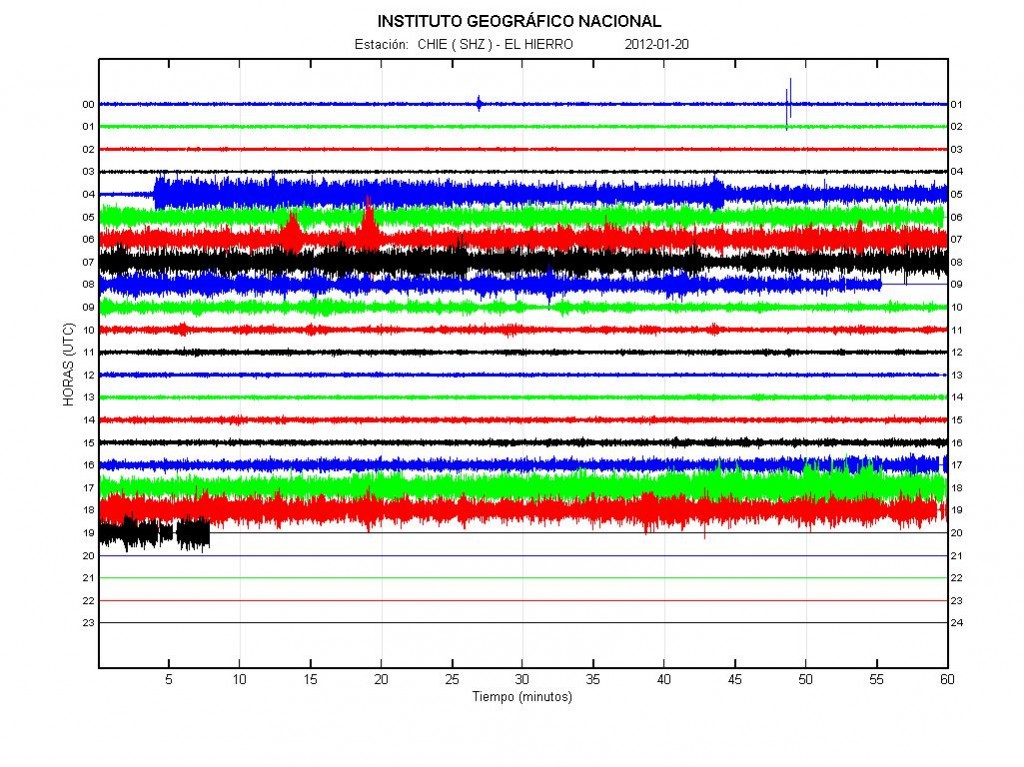
Activity in El Hierro volcano today. The increase in harmonic tremor marks the start of new eruption in El Hierro volcano. Copyright of this image belongs to IGN (Instituto Geográfico Nacional).
Blog post updated at 00:50 UTC on 20.01.2012.
Blog post updated at 19:31 UTC on 20.01.2012.

